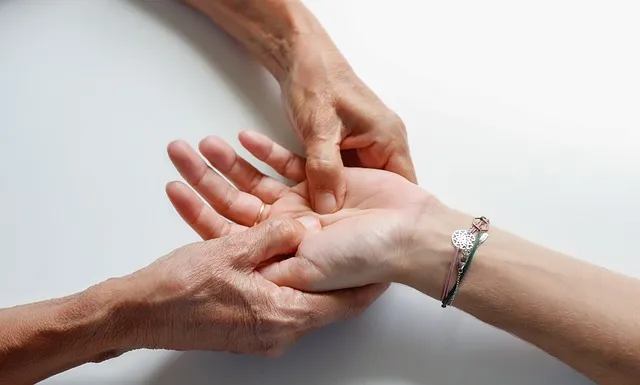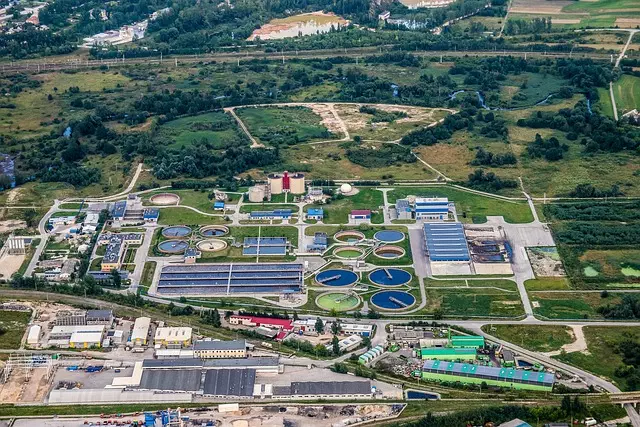Cellulite, a common concern especially among women, is caused by uneven fat distribution leading to dimpled skin. Genetic predisposition, hormonal changes, poor circulation, and sedentary lifestyles contribute. Non-invasive body contouring techniques like RF energy, laser therapy, electromagnetic energy, ultrasound, and vacuum therapy offer effective solutions with minimal downtime. Safety should be a top priority when choosing treatments, consulting a board-certified practitioner. Body contouring is ideal for those who've exhausted non-invasive options. Post-care involves rest, hydration, and gentle exercises. Managing expectations is crucial as results vary based on individual factors. Future trends include advanced technologies and natural, holistic approaches to body sculpting treatments.
Cellulite, characterized by dimpled skin and pockets of fat, remains a common concern for many. If non-surgical solutions are desired, body contouring offers promising alternatives. This article delves into various aspects of body sculpting treatments for cellulite reduction. We explore non-invasive techniques, popular methods, benefits, risks, patient eligibility, post-treatment care, and expected success rates. Additionally, we discuss emerging trends in the field, empowering readers to make informed decisions regarding these transformative procedures.
Understanding Cellulite: Causes and Characteristics

Cellulite is a common concern for many individuals, particularly women, due to its prevalence on the thighs, buttocks, and abdomen. It’s characterized by a dimpled or orange-peel appearance of the skin, caused by an uneven distribution of fat cells beneath the surface. Understanding the causes is essential when considering body contouring treatments.
The primary contributors to cellulite include genetics, hormonal changes, poor circulation, and a sedentary lifestyle. Genetic predisposition plays a significant role, as certain individuals are more susceptible due to their body’s natural tendency to store fat in a particular way. Hormones like estrogen and cortisol can also impact fat metabolism and distribution, while reduced blood flow exacerbates the problem by hindering the removal of toxins and waste products from affected areas.
Non-Invasive Body Contouring Techniques for Cellulite Reduction

Non-invasive body contouring techniques have emerged as popular solutions for cellulite reduction, offering effective alternatives to more aggressive methods. These treatments focus on stimulating collagen production and improving skin elasticity, which helps to smooth out dimpled appearances. Technologies like radiofrequency (RF) energy and laser therapy are among the leading non-surgical options. RF energy delivers targeted heat to break down fat cells and boost collagen synthesis, while lasers use light energy to tighten skin fibers and reduce the appearance of cellulite.
Body sculpting treatments such as these provide a less risky and more comfortable approach to achieving smoother, firmer skin. They are ideal for individuals seeking temporary yet noticeable results without the downtime or potential complications associated with invasive procedures. Many top-tier clinics now offer these advanced non-invasive options, catering to those looking to enhance their figure and boost their confidence.
Common Methods of Body Sculpting Treatments

Body contouring treatments have evolved significantly, offering a range of options for addressing cellulite and sculpting the body. One popular method is body sculpting treatments using radiofrequency (RF) energy, which targets deep layers of tissue to stimulate collagen production and improve skin texture. This non-invasive procedure is often painless and requires minimal recovery time.
Another common approach involves using laser technology, specifically focusing on breaking down fat cells and improving blood circulation. Body sculpting treatments like these can provide significant results, leading to a smoother, more toned appearance. Additionally, technologies such as electromagnetic energy, ultrasound, and vacuum therapy are also used, each with its unique benefits and applications in reducing cellulite and enhancing body contouring.
Benefits of Choosing a Body Contouring Approach

Choosing body contouring treatments for cellulite offers a multitude of benefits, enhancing both appearance and confidence. Unlike conventional methods that merely mask issues, body sculpting treatments go beyond surface-level changes. They target the underlying fat and connective tissue, breaking down stubborn cellulite at its root cause. This results in longer-lasting, more dramatic improvements.
Additionally, these advanced procedures are non-invasive, making them a safer alternative to surgical options. They promote collagen production, improving skin texture and elasticity, leading to a smoother, firmer appearance. Many body contouring treatments are also highly customizable, catering to individual needs and preferences. This personalized approach ensures optimal results, giving you the toned, contoured figure you desire without compromising your health or comfort.
Safety Precautions and Potential Risks

When considering body contouring treatments for cellulite, it’s crucial to be aware of safety precautions and potential risks involved. These procedures, which include non-invasive and minimally invasive techniques like mesotherapy, radiofrequency, and laser therapy, are generally safe when performed by qualified professionals using approved equipment. However, as with any medical intervention, there are considerations to keep in mind.
Potential side effects may include temporary redness, swelling, bruising, or discomfort at the treatment site. Less commonly, more serious reactions such as skin irritation, infection, or changes in skin sensation could occur. It’s essential to choose a reputable clinic and consult with a board-certified practitioner who can provide detailed information on risks, benefits, and alternatives before proceeding with any body sculpting treatments.
Patient Eligibility and Consultation Process

Body contouring treatments, including those targeting cellulite, are typically suitable for individuals who have tried non-invasive methods to reduce appearance of dimpling and orange peel skin without success. During the consultation process, a qualified practitioner will assess your medical history, current health status, and specific concerns. They will discuss your expectations, examine your skin, and determine if body contouring is an appropriate solution for you. This may involve taking measurements, examining your skin’s texture and elasticity, and considering factors such as your lifestyle, diet, and exercise routine.
Post-Treatment Care and Recovery Tips

After undergoing any body contouring treatment, proper post-care is essential for optimal results and to ensure a smooth recovery process. The first few days following your procedure might involve some discomfort, swelling, and bruising, which are normal side effects. It’s crucial to give your body time to heal; rest is key during this period. Elevating the treated areas can help reduce any swelling, so try to keep them slightly above heart level when resting.
Staying hydrated is another vital aspect of post-treatment care. Drinking plenty of water promotes lymphatic drainage, aiding in the reduction of cellulite and general healing. Additionally, gentle exercise like walking or yoga can help improve circulation and speed up recovery without putting excessive strain on your body. Avoid strenuous activities and heavy lifting for at least a week after the treatment to prevent any complications. Always follow your healthcare provider’s advice for specific care instructions tailored to your body sculpting treatments.
Realistic Expectations and Success Rates

When considering body contouring treatments for cellulite, it’s crucial to manage expectations. Unlike what some marketing might suggest, these treatments aren’t miracles. They can, however, offer significant improvements in skin texture and appearance over time. Success rates vary based on several factors like skin elasticity, severity of cellulite, and individual response to the procedure.
Body sculpting treatments like cryolipolysis (fat freezing), laser therapy, and mesotherapy have shown promising results for many. Yet, it’s essential to understand that these procedures are not one-size-fits-all solutions. Realistic goals include reduced dimpling, smoother skin, and improved overall appearance rather than complete elimination of cellulite. Consulting with a qualified professional can help set achievable expectations tailored to your specific needs.
Exploring Future Trends in Cellulite Treatment

The future of cellulite treatment is exciting, with a growing focus on body contouring and non-invasive procedures. The demand for effective yet gentle solutions continues to drive innovation in dermatology and cosmetic medicine. One notable trend is the integration of advanced technologies, such as high-intensity focused ultrasound (HIFU) and laser therapy, which offer precise targeting of adipose tissue while minimising skin damage. These cutting-edge Body Sculpting Treatments are revolutionizing the way we address cellulite, providing patients with more options for achieving smooth, toned skin.
Additionally, there’s a growing emphasis on natural, holistic approaches to skincare. This shift towards wellness reflects a broader trend in consumer preferences. Treatments combining ingredients like coffee extracts, green tea, and vitamin-rich serums are gaining popularity for their potential to improve skin texture and reduce the appearance of dimples. As research continues to uncover the complex interplay between lifestyle, diet, and skin health, future cellulite treatments will likely be more personalised and tailored to individual needs.
